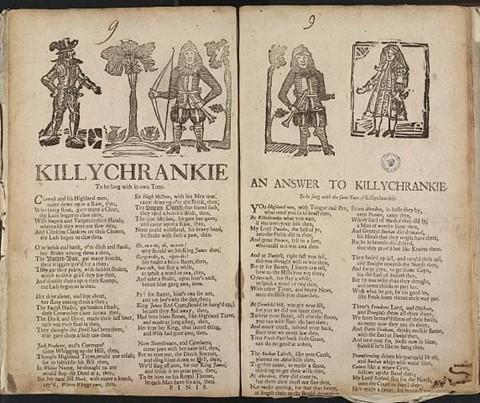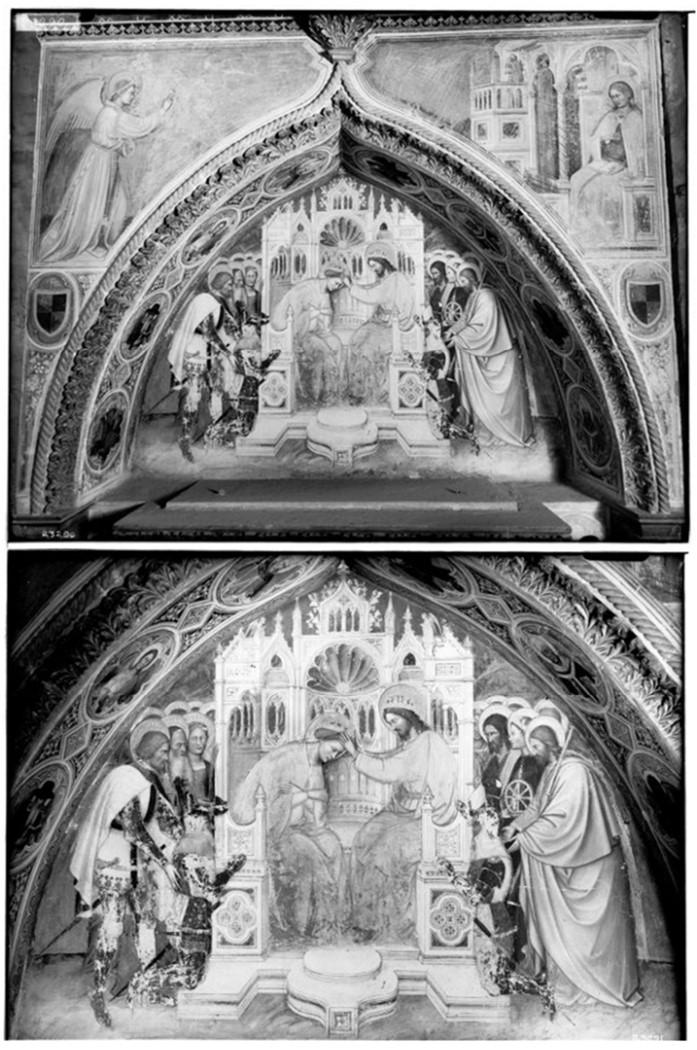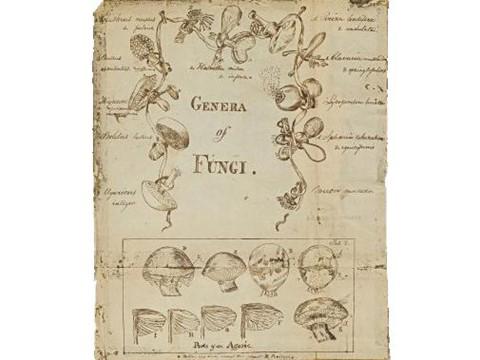Resources for Applicants: Humanities Collections and Reference Resources

With a 2020 HCRR award, the English Broadside Ballad Archive added printed ballad sheets like this from 101 institutions to its archive.
Image: National Library of Scotland – Miscellaneous EBBA 33946.

With a 2020 HCRR award, the English Broadside Ballad Archive added printed ballad sheets like this from 101 institutions to its archive.
Image: National Library of Scotland – Miscellaneous EBBA 33946.
Did you know that at the end of the Notice of Funding Opportunity, we provide a list of additional resources for applicants in Section H? By featuring these in a series of blog posts, we hope that they may help you jump start and refine your project ideas. And remember, NEH staff are always available to consult with applicants, too.
Collaboration and Accessibility
Protocols for Native American Archival Materials (First Archivists Circle, 2007)
This document is intended to guide libraries and archives in engaging in culturally responsive care of Native American archival materials and in providing culturally appropriate service to communities. Topics include accessibility and use, copying and repatriation of records to Native American communities, and reciprocal education and training.
Guidelines for Collaboration with Native Communities (Indian Arts Research Center, School for Advanced Research, 2019)
The School for Advanced Research shares two separate and complementary sets of guidelines: one for Native communities and the other for museums. The documents offer principles and considerations for building successful collaborations as well as case studies representing such partnerships.
Accessibility Fundamentals (W3C Accessibility Initiative, 2021)
The World Wide Web Consortium Web Accessibility Initiative provides information for getting started with accessibility. The overview explains the people aspect of accessibility, shows the relationship between web accessibility and web development, introduces a list of web accessibility principles, and provides links to other courses on digital accessibility.
Digitization
A Framework of Guidance for Building Good Digital Collections (National Information Standards Organization, 3rd edition, 2007)
This document provides an overview of some of the major components and activities involved in creating good digital collections and identifies existing resources that support the development of sound local practices for creating and managing digital collections. The framework is organized as nine collections principles.
Digitization Guidelines (Federal Agencies Digital Guidelines Initiative)
The guidelines are comprised of documents that have been drafted or are recommended by either the Still Image or Audiovisual Working Group and range from guidelines recommending specific metrics to those describing more general processes or methodologies.
Digitization Cost Calculator (Digital Library Federation)
The Digitization Cost Calculator produces an estimate of time and costs for each process of a digitization project based on inputted parameters, including the cost of staff, the quantity of material to be digitized, and staff assignments.
GLAM 3D (Engleberg Center on Innovation Law & Policy at NYU Law School, 2022)
Glam3D.org is an open resource that can walk users through the entire process of planning, creating, and launching an Open Access 3D scanning program.
International Image Interoperability Framework (IIIF Consortium)
The International Image Interoperability Framework is a set of open standards for delivering high-quality, attributed digital objects online at scale. The website also contains guides for users to find and work with IIIF materials, built by members of the community.
Description
Standards at the Library of Congress (Library of Congress)
The Library of Congress shares key standards used in the information community that are maintained by the Library of Congress. The resources are displayed in four categories: resource description formats, digital library standards, information resource retrieval protocols, and information resource retrieval standards.
Cataloging Cultural Objects (Visual Resources Association, 2006)
The Visual Resources Association offers a free online manual to help users describe, document, and catalog cultural artifacts and visual media that represent them.
Anti-Racist Description Resources (Society of American Archivists Council Approval, 2022)
The Archives for Black Lives in Philadelphia share metadata recommendations for archival professionals to address issues in archival description of underrepresented and marginalized groups, especially those in the Black community.
Guidelines for Electronic Text Encoding and Interchange (The Text Encoding Initiative Consortium)
The Text Encoding Initiative Guidelines focus on the encoding of documents in the humanities and social sciences, in particular, the representation of primary source materials for research and analysis.
Code of Best Practices in Fair Use for Academic and Research Libraries (Association of Research Libraries, 2012)
This document is devised specifically by and for the academic and research library community. It identifies eight situations that represent the library community’s current consensus about acceptable practices for the fair use of copyrighted materials and describes a carefully derived consensus within the library community about how those rights should apply in certain recurrent situations
Code of Best Practices in Fair Use for the Visual Arts (College Art Association, 2015)
This document, developed by the College Art Association, outlines five consensus principles that reflect best practices by members of the visual arts community in applying fair use.
Digital Preservation
Levels of Digital Preservation (National Digital Stewardship Alliance/Digital Library Federation, 2019)
The Levels of Digital Preservation is a resource for digital preservation practitioners when building or evaluating their digital preservation program. Specific resources include implementation guidelines, an assessment tool, and a training slide deck.
Digital Preservation Coalition Technology Publications (Digital Preservation Coalition)
Technology Watch reports provide in-depth, peer-reviewed reference guides on topics such as preserving social media, the Open Archival Information System reference model, and intellectual property rights and preservation. Guidance notes provide short overviews of preservation challenges and solutions.
OSSArcFlow Guide to Documenting Born-Digital Archival Workflows (Educopia Institute, 2020)
This guide documents and describes the steps that are commonly included in digital curation workflows, from acquisition to access and preservation. The guide also provides case studies and examples of how institutions can implement these procedures.
The Socio-Technical Sustainability Roadmap (Visual Media Workshop at the University of Pittsburgh, 2018)
The Socio-Technical Sustainability Roadmap is a module-based workshop to help teams approach the task of sustaining digital humanities projects over time. The modules are organized into three sections: project survey, staffing and technologies, and digital sustainability plans.
Audiovisual Media Preservation
ARSC Guide to Audio Preservation (Association of Recorded Sound Archivists, Council on Library and Information Resources, and National Recording Preservation Board of the Library of Congress, 2015)
A collaboration between the Association of Recorded Sound Archivists, Council on Library and Information Resources, and National Recording Preservation Board of Library of Congress, this guide is intended as a primer to assist nonspecialists with preserving audio items in their collections. The guide contains nine chapters: Preserving Audio; Audio Formats: Characteristics and Deterioration; Appraisals and Priorities; Care and Maintenance; Description of Audio Recordings; Preservation Reformatting; What To Do After Digitization; Audio Preservation: The Legal Context; and Disaster Prevention, Preparedness, and Response.
Meeting the Challenge of Media Preservation: Strategies and Solutions (Indiana University, Media Preservation Initiative Task Force, 2011)
In this document, the Media Preservation Initiative Task Force at Indiana University, Bloomington, investigates strategies and solutions for preserving audio and video collections and integrating them into campus research and instruction.
Resources for Applicants:
Choosing a Collections Management System (Technical Leaflet 286, American Association for State and Local History, 2019)
This leaflet lists the responses of Collections Management System companies to questions about the services they provide. The leaflet also provides a short list of relevant terms and definitions as well as resources from the Canadian Heritage Information Network.
Professional Practices for Academic Museums and Galleries (Association of Academic Museums and Galleries, 2017)
This document outlines best practices drawn from American museum organizations and are aligned with the categories currently used by the American Alliance of Museums to better guide museums on the path to national accreditation or reaccreditation.
Guides to Good Practice (Archaeology Data Services and Digital Antiquity, 2011)
This two-year collaborative project between the UK Archaeology Data Service and Digital Antiquity in the United States produced these six guides to archaeological project workflows. The six topics are the project lifecycle, basic components of digital archives, data collection and fieldwork, data analysis and visualization, case studies, and preparing and depositing an archive.
Archiving Oral History (Oral History Association, 2019)
This document outlines ethical principles, best practices in collecting oral history, guidelines for social justice oral history work, guidelines for archiving oral history, and a glossary of related terms.
The Preservation Self-Assessment System (University of Illinois Libraries, 2016)
This free online tool helps collection managers prioritize efforts to improve the conditions of collections. Through guided evaluation of materials, storage/exhibit environments, and institutional policies, the PSAP produces reports on the factors that impact the health of cultural heritage materials and defines the points from which to begin care.
NEDCC Preservation Leaflets (Northeast Document Conservation Center)
The Northeast Document Conservation Center maintains a series of online documents on preservation topics. The seven categories are planning and prioritizing, the environment, emergency management, storage and handling, photographs, reformatting, and conservation procedures.

